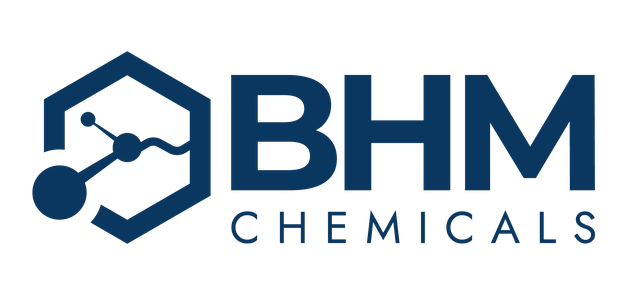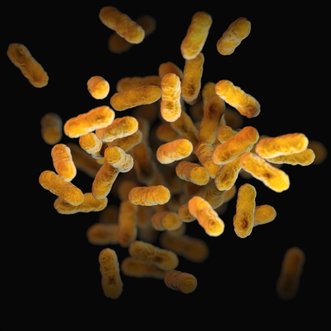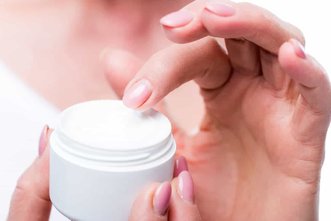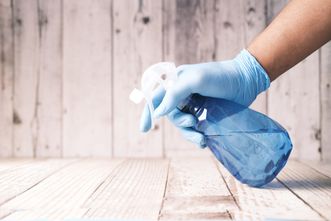Chlorocresol
Preservative
CAS no. 59-50-7
Chlorocresol, also recognized as 4-chloro-3-methylphenol or p-chloro-m-cresol (ClC6H3CH3OH), stands as a robust disinfectant and antiseptic, presenting as a pinkish white crystalline solid.
Beyond its disinfectant prowess, it serves as a preservative in various cosmetic and medicinal formulations tailored for humans and animals alike.
It is also used widely as and active ingredient in various veterinary applications.
Its antimicrobial properties span across gram-positive and gram-negative bacteria as well as fungi, making it a versatile solution in combating various microbial threats.
Minimum order quantity: 25kg
Chlorocresol, a chemical compound known for its antimicrobial properties, has etched its place in the realm of pharmaceuticals and personal care products.
Historical Journey
Chlorocresol, chemically identified as 4-chloro-3-methylphenol, emerged in the early 20th century as a derivative of phenol. The synthesis and recognition of its antimicrobial properties paved the way for its adoption in various industries. Initially developed for its antiseptic qualities, chlorocresol has since found applications in pharmaceuticals, cosmetics, and industrial processes.
Properties
Chemical Composition and Structure:
Chlorocresol belongs to the family of chlorinated phenols, featuring a chlorinated aromatic ring. Its molecular structure, with a chlorine substitution on the cresol ring, contributes to its antimicrobial efficacy. The compound is soluble in alcohol and ether, further enhancing its versatility in different formulations.
Antimicrobial Action:
Chlorocresol exerts its antimicrobial effects by disrupting the cell membranes of microorganisms. This mechanism inhibits their growth and multiplication, making it effective against a spectrum of bacteria and fungi.
Stability and Formulations:
Chlorocresol is known for its stability in various formulations, allowing for its incorporation into a range of products. This stability contributes to the compound's longevity and effectiveness in preserving the integrity of pharmaceuticals and personal care items.
Uses
Pharmaceutical Applications:
- Antiseptic Solutions: Chlorocresol has a long history of use in antiseptic solutions, aiding in the prevention of infection in wounds and minor injuries.
- Preservative in Pharmaceuticals: Its antimicrobial properties make chlorocresol a valuable preservative in pharmaceutical formulations, ensuring the stability and shelf life of medications.
Veterinary Applications:
- Chlorocresol serves as a key component in certain veterinary medicine formulations designed for toopical, oral, and injectable applications. In oral and injectable veterinary products, the typical concentration of p-Chlorocresol ranges between 0.1% to 0.2%. However, in topical veterinary products, concentrations tend to be higher, around 0.5%. p-Chlorocresol demonstrates antimicrobial properties effective against a broad spectrum of bacteria (both gram-positive and gram-negative) as well as fungi.
Cosmetics and Personal Care Products:
- Skin Care Products: Chlorocresol is incorporated into various skincare formulations such as creams and lotions for its antimicrobial and preservative capabilities.
- Deodorants and Antiperspirants: Due to its ability to combat bacteria, chlorocresol is found in deodorants and antiperspirants, contributing to their efficacy in odor control.
Industrial Applications:
- Preservation in Paints and Coatings: Chlorocresol's antimicrobial properties make it useful in preserving the integrity of paints and coatings, preventing microbial growth.
- Wood Preservation: In the wood industry, chlorocresol is employed to protect wood against decay and fungi, enhancing its durability.
Benefits
Infection Prevention:
Chlorocresol's antiseptic properties contribute to its role in preventing infections in wounds and cuts, promoting faster healing and reducing the risk of complications.
Extended Shelf Life of Pharmaceuticals:
As a preservative in pharmaceuticals, chlorocresol ensures that medications remain stable and potent over an extended period, benefiting patients by maintaining the efficacy of the drugs.
Chlorocresol, with its rich history, diverse properties, and extensive applications, stands as a versatile compound in various industries. From pharmaceuticals to personal care products and industrial processes, chlorocresol's antimicrobial prowess continues to play a crucial role. As science and technology advance, further research into the compound's applications and benefits is likely to uncover even more opportunities for its use in enhancing human health and well-being.
References:
- Ricciotti E, FitzGerald GA. Prostaglandins and Inflammation. Arterioscler Thromb Vasc Biol. 2011 May;31(5):986-1000. doi: 10.1161/ATVBAHA.110.207449. PMID: 21508345; PMCID: PMC3081099.
- Grosser T, Yusuff S, Cheskis E, Pack MA, FitzGerald GA. Developmental expression of functional cyclooxygenases in zebrafish. Proc Natl Acad Sci U S A. 2002 Dec 10;99(25):8418-23. doi: 10.1073/pnas.122231899. Epub 2002 May 24. PMID: 12034878; PMCID: PMC123077.
- Mitchell JA, Kirkby NS. Eicosanoids, Prostacyclin and Cyclooxygenase in the Cardiovascular System. Br J Pharmacol. 2019 Oct;176(20):3921-3929. doi: 10.1111/bph.14728. Epub 2019 May 6. PMID: 30920688; PMCID: PMC6784504.
PRODUCT SPECIFICATION
CHARACTERISTICS
Content (Assay)
Identification
Melting Point
Appearance of Solution
Acidity
Any single impurity
Total impurities
Non-volatile matter
HAZARDOUS IDENTIFICATION
STORAGE
A white crystalline powder or colourless or almost colourless crystals, slightly soluble in water, very soluble in alcohol, freely soluble in ether and in fatty oils. It dissolves in solutions of alkali hydroxides.
98.0% - 101.0%
Conforms to Ph. Eur. tests
640 – 670C
The solution is clear and not more intensely coloured than reference solution BY6
Not more than 0.2ml of 0.01M NaOH is required to produce a pure yellow colour
Maximum 0.1%
Maximum 1.0%
Not more than 0.1%
Hazardous class 9, UN 3077, Packing group III
Keep container tightly closed in a cool and dry place and protected from light. Protect from contamination by foreign substances.








